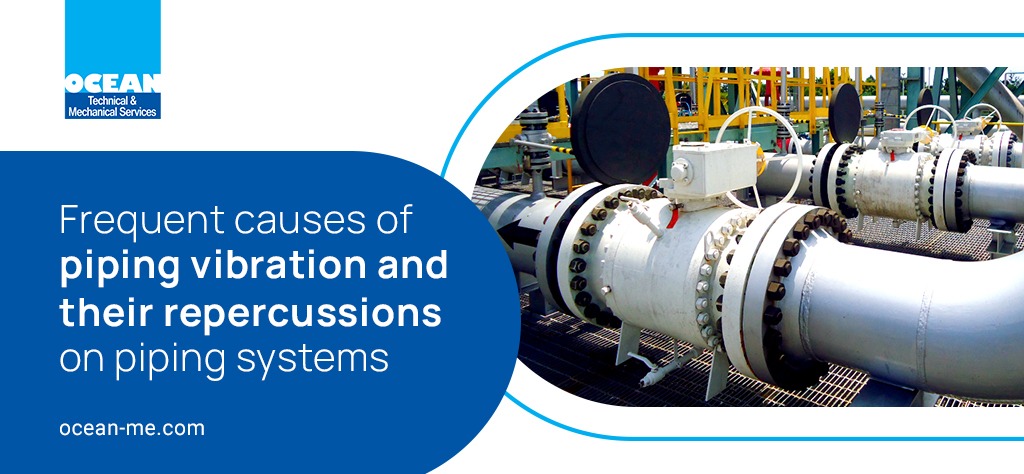A continuous to-and-fro motion starting from an equilibrium state is referred to as “piping vibration.” Piping vibration issues pose major integrity hazards to operational plants, including those located onshore and offshore. The piping system vibration can lead to equipment dependability issues, tiny branch connection failures, and process piping breakdowns. Pipe vibration can also damage equipment nozzles, relief lines, instrumentation ports, drain connections, and valves.
Read more about:
- Ultrasonic Flow Measurement Services
- The Importance of Vibration Analysis in Maintenance
- How Can IoT Condition Monitoring Methods Enhance Machinery Health
Piping Vibration: What Is It?
Numerous reasons can cause these piping vibrations. People frequently disregard the vibrations in a plumbing system because they are thought to be normal. These folks frequently don’t understand the harm and defects that pipe vibrations may cause to piping systems.
It is essential to remember that a piping vibration can seriously harm or even destroy running machinery and plants. However, because the design of pipes is a broad field of research and every process and facility is unique, the majority of pipe rules are insufficient to deal with vibration analysis.
These standards give a broad overview and a framework for pipe systems, but they don’t offer answers or in-depth information about how to prevent piping vibration damage. We must first comprehend the sources and consequences of these pipe vibrations before even thinking about finding a remedy for the harm they do.
The Most Frequent Factors Causing Piping Vibration
Piping vibrations can be caused by a wide range of factors. Among the primary and most frequent causes are:
- Vibrations in the pipework can be caused by flow-induced turbulence in the liquid flow.
- Mechanical forces are produced by machinery like compressors and pumps, which cause pipe vibration.
- Piping vibration is brought on by high-pressure, high-frequency acoustic excitations.
- The fast closure of the valve can cause a surge, water hammer, and momentum changes, which can also cause pipe vibration.
- The significant pressure reduction, which is frequently local, causes cavitation or vapour bubble collapse. This causes the pipes to vibrate, which eventually causes system damage.
Effects of Piping Vibration and Associated Risks
These pipe vibrations have the potential to destroy the piping systems and cause issues with the equipment. These undesirable pipe vibrations put further strain on the piping system, which eventually leads to failure. If the stress stays and causes a crack in the pipe, the whole pipe system could fail.
The vibrations of the pipes cause cyclic relative motion, which can cause fretting in addition to the stress content. This wears away the surface of the pipes.
Small-bore connections are to blame for the majority of pipe system failures (SBCs). Several of the causes include
- If the enormous pipes are not supported.
- When regular pipe vibration checks and maintenance are neglected.
- When the flow of liquid is under stress from repeated bends, etc.
If you want a piping system that runs smoothly and without vibrations, you should get rid of any unnecessary bends. They shouldn’t be mechanically resonant to the forces that excite the piping system.
Conclusion
The piping system(s) must be repaired or replaced as quickly as feasible if there are piping vibrations that cause damage and system failure. These vibrations are brought on by insignificant causes. To avoid pipe vibration problems, a flawless piping system may be built with the assistance of qualified designers. Regular pipe vibration analysis to identify and fix the problems is also very helpful.
Ocean Technical and Mechanical Services provide regular maintenance services to your piping systems to avoid equipment failure and minimise downtime. Oceanme provides the finest condition monitoring, predictive and preventive maintenance, supply, and distribution of engineering products to all of their clients and principles.



